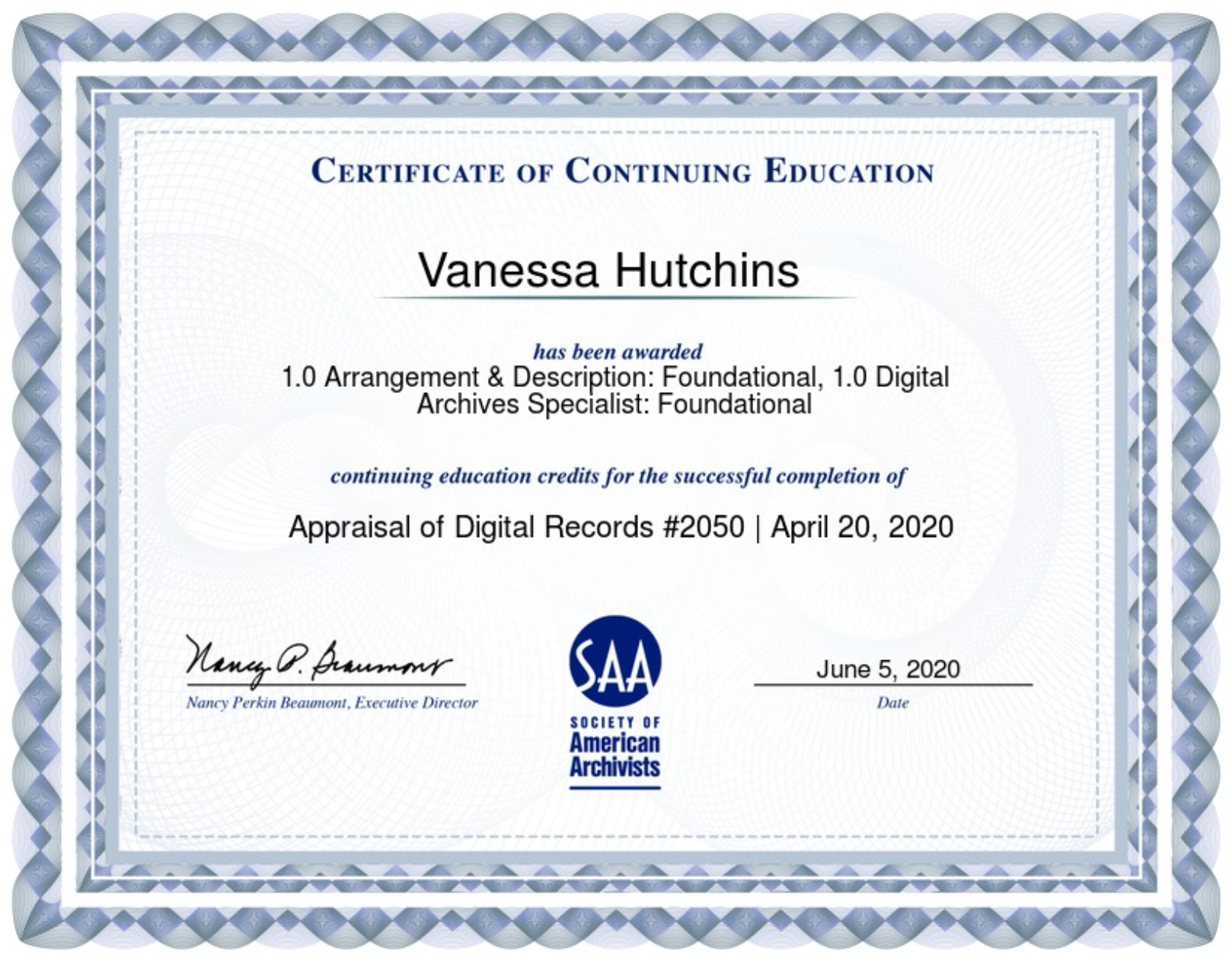Records Management
“The work of archivists relates closely to the responsibilities of records and information managers…[archivists] should be able to analyze a creator's structure, decision-making, and recordkeeping systems and apply that knowledge to decisions regarding other archival functions.” — Society of American Archivists GPAS
The DIRKS Methodology
Archivists are entrusted to provide an ethical level of access to information, as well as to account for the origin, context, and provenance of a resource. This aspect of archival work benefits from experience with records and information management (RIM). Through graduate coursework in RIM, I applied the DIRKS methodology to assess a classmate’s personal electronic recordkeeping systems. The experience brought me insight into the lifecycle of records in their creation, distribution, use, maintenance, rest, and disposition.
DIRKS provided benchmarks for me to examine and suggest improvements for my classmate’s systems. The methodology was adapted for working with an individual rather than an organization, and as such it only involved the first six out of the usual eight steps in DIRKS.
Note: This excerpt uses redaction marks and/or fictitious names, based on the DIRKS subject’s privacy preferences.
Technical Writing & Presenting Information
The DIRKS assignment that I present here also demonstrates my ability to write about complex technical topics. For example, one assignment expectation was that I report a thorough analysis of Google Drive’s technical capabilities as relevant to RIM standards (see DIRKS D). In addition to presenting technical information for a non-specialist adult audience, I created graphics to support the documentation and engage the reader’s attention. In coordination with the other report authors, I often provided graphic design leadership and sought consistency in tone and readability across the document sections.
In addition to my background in information science, my communication skills stem from over six years of experience as an educator. I understand how to design for vision and cognition, as well as how to break down information into digestible components.











Appraisal of Digital Records
As applicable to both records management and digital archives, my training on ISO principles, recordkeeping technologies, and appraisal methodologies allow me to assess the value of records for the functions of a creator, institution, or repository. For example, I have insight on how to:
Develop an appraisal policy for archival institutions
Assess the physical, logistical, and technical feasibility (such as metadata and software dependence) of maintaining and preserving records
Reach decisions based on criteria regarding custody, authenticity, completeness, volume, preservability, accessibility, reference frequency, legal requirements, and cost


